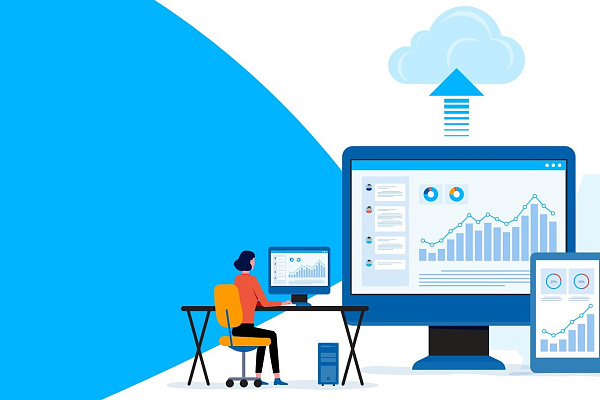With the rapid development of cloud technology, virtual data centers are becoming more and more in demand. Virtualization technologies help organizations reduce hardware and maintenance costs, and simplify IT infrastructure management. In this article, we explore virtual data centers, their components, and benefits.
What is a virtual data center?
A Virtual Data Centre (VDC) is a set of resources in the provider's cloud, represented by servers, networks, and storage, used as the basis for building cloud IT infrastructure of any complexity.
A virtual data center is more flexible and functional than a physical one. The customer manages resources via a portal. He can add/delete resources, create virtual machines, specify network settings, and set backup parameters, all without interacting with the provider's technical support team.
Virtualization technologies used in virtual data centers
A VDC is a multi-layered system, each with its own layer of virtualization and capabilities. Resources at each layer are pooled for later use by the hypervisor. Let’s take a closer look at the main layers.
Network virtualization provides connectivity so that virtual servers can communicate with each other. This ensures you do not just have a set of individual virtual machines, but an infrastructure capable of exchanging data.
Storage virtualization enables the use of hardware components to scale the IT infrastructure. By combining multiple, disparate disks into a single array, resource consumption is evenly distributed, optimizing the available space on the drives.
Virtualization of computing resources provides the flexibility to manage the resources. For example, adding the required amount of RAM, or using one or more processor cores.
Access virtualization provides a solution for remote connectivity to the infrastructure. With high user mobility and the necessity to organize remote work for employees, this is especially important. Access virtualization increases the efficiency and convenience of authentication services for users.
Traditional Data Centers and a virtual Data Centers
A virtual data center falls under the Infrastructure-as-a-Service (IaaS) category. Cloud provider delivers computing and networking components, storage, and applications on demand. The idea of using a VDC solution gives an organization the ability to scale up capacity or install new infrastructure without buying expensive equipment.
Costs
Building your own data center requires capital expenditure. Before investing, you need to estimate future needs. This could be a challenging task in a rapidly changing technology landscape. VDC use OpEx to meet IT infrastructure requirements. You only pay for the capacity you need.
Convenience
Physical server implies deployments with a fixed CPU, memory, and storage configuration with limited scalability.
VDC – the deployment of scalable virtual servers and storage to suit enterprise workloads.
Security
With a physical data center, protecting data storage would require a specialist, as well as the development and implementation of various protocols. In a virtual data center, these issues are delegated to the provider.
Conclusion
A virtual data center is replacing physical equipment. Customers choose the configuration that best suits their requirements and only pay for what they need and when they need it. The solution is therefore suitable for any task and allows transforming capital expenditure on IT infrastructure into operational expenditure. Today, this service enables to implement of large-scale projects, especially when it comes to deploying new or expanding existing infrastructure.
If you have any questions about the virtual data center or why it's useful let us know. Contact us online or call us at +44 20 80 89 80 01.



